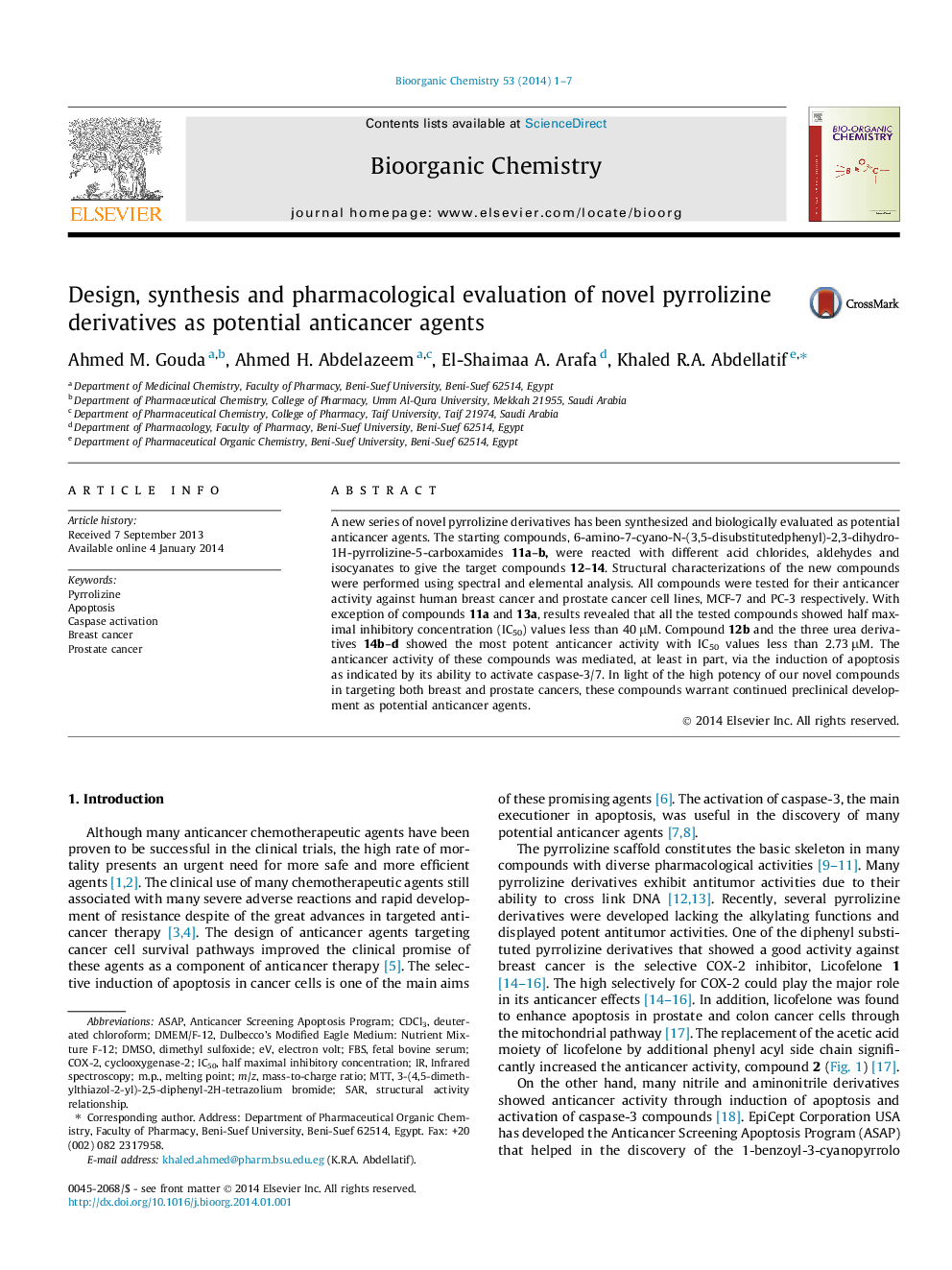| Article ID | Journal | Published Year | Pages | File Type |
|---|---|---|---|---|
| 1355628 | Bioorganic Chemistry | 2014 | 7 Pages |
•New series of pyrrolizine derivatives were designed and synthesized.•All compounds were evaluated as anticancer agents against a panel of cell lines.•Compounds 12b and 14b–d were the most potent with IC50 values <2.73 μM.•The tested ligands exhibited an ability to activate caspase-3/7.
A new series of novel pyrrolizine derivatives has been synthesized and biologically evaluated as potential anticancer agents. The starting compounds, 6-amino-7-cyano-N-(3,5-disubstitutedphenyl)-2,3-dihydro-1H-pyrrolizine-5-carboxamides 11a–b, were reacted with different acid chlorides, aldehydes and isocyanates to give the target compounds 12–14. Structural characterizations of the new compounds were performed using spectral and elemental analysis. All compounds were tested for their anticancer activity against human breast cancer and prostate cancer cell lines, MCF-7 and PC-3 respectively. With exception of compounds 11a and 13a, results revealed that all the tested compounds showed half maximal inhibitory concentration (IC50) values less than 40 μM. Compound 12b and the three urea derivatives 14b–d showed the most potent anticancer activity with IC50 values less than 2.73 μM. The anticancer activity of these compounds was mediated, at least in part, via the induction of apoptosis as indicated by its ability to activate caspase-3/7. In light of the high potency of our novel compounds in targeting both breast and prostate cancers, these compounds warrant continued preclinical development as potential anticancer agents.
Graphical abstractGeneral scaffolds (A and B) for the newly designed anticancer pyrrolizine derivatives.Figure optionsDownload full-size imageDownload as PowerPoint slide
